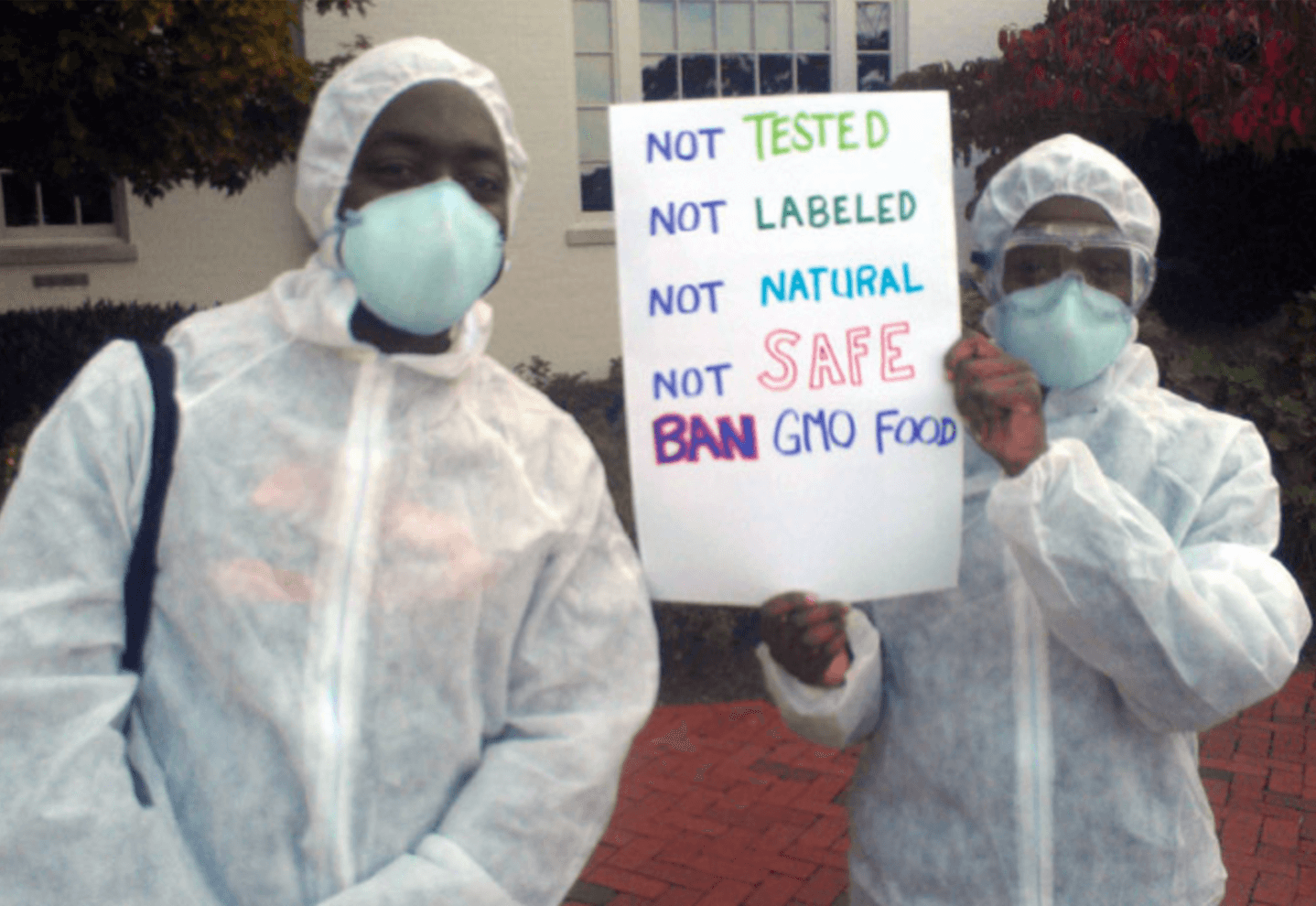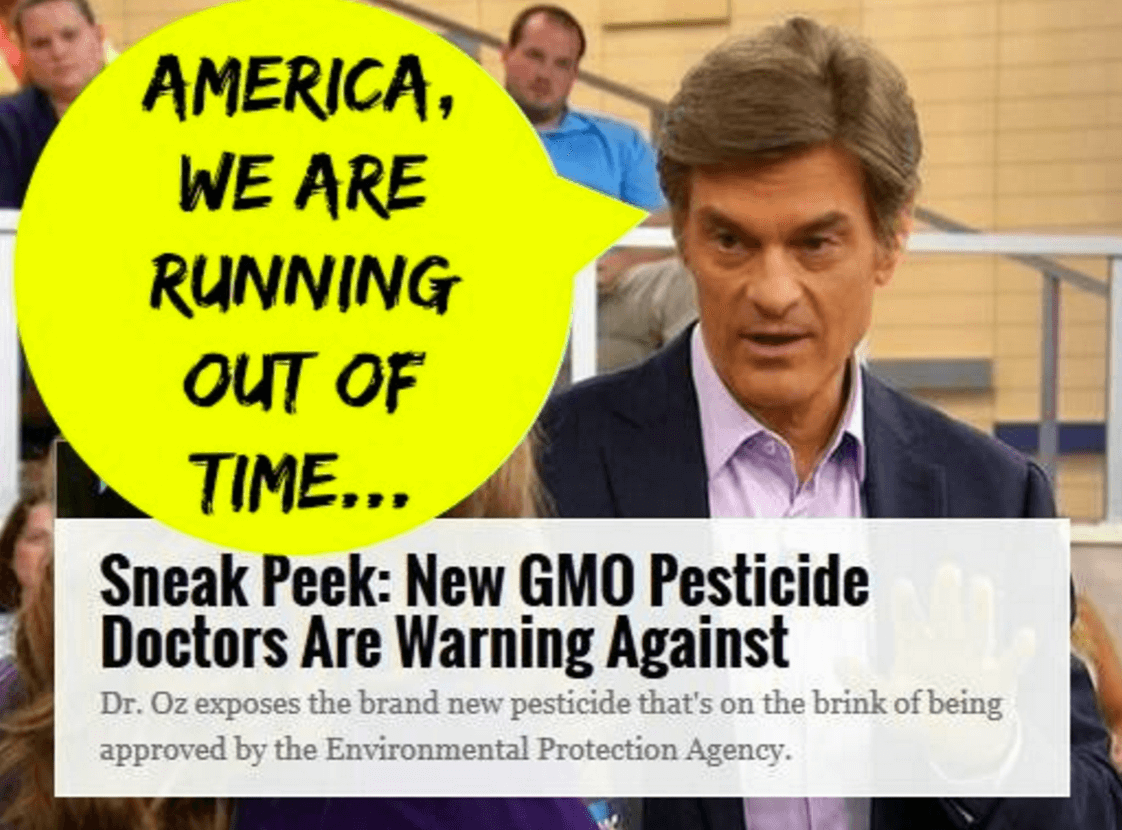In Part I, covering myths 1-6, Micheal and Peter Hess examined the societal perceptions of GMOs by many critics as an unnatural Frankenstein-like creation perpetrated by reckless, money-hungry corporations and the catastrophic effect GMOs supposedly have on farmers.
In Part II, myths 7-11, the authors look at the health and safety criticisms leveled at GMO agriculture, claims that it increases the use of dangerous chemicals and the accusation that it cannot play a significant role in addressing world food needs.
Myth 7: GMOs are untested or rarely tested
Source of the myth: This myth is bandied about without substantiation, as in this claim on the Natural News website:
Human trials with a new genetically modified (GM) banana with artificial levels of the vitamin A precursor beta-carotene are set to begin this fall without prior animal testing. Researchers plan to feed the “frankenfruit” to college students attending Iowa State University.

The truth: The fact is that no humans were used as guinea pigs. The modified banana had no genetic changes that could cause any biological damage. The students who agreed to participate in the study were helping to determine the vitamin effectiveness of the GM bananas. Use of terms such as “frankenfruit” commits the fallacy known as “appeal to fear,” misrepresenting the subject in question
The biotech products in our global food supply are more thoroughly tested than almost any other food. They are certainly tested more than thousands of species of naturally-evolved plants and fungi that go through no testing regimen for safe human consumption, and that every year kill tens of thousands of people globally because of their unknown toxic levels. Here are three reviews of scientific studies illustrating the degree of testing to which genetically modified products are subjected:
- “Assessment of the health impact of GM plant diets in long-term and multigenerational animal feeding trials: A literature review,”Food and Chemical Toxicology, Volume 50, Issues 3–4, March–April 2012, Pages 1134–1148.
- “A Meta-Analysis of Effects of Bt Crops on Honey Bees (Hymenoptera: Apidae),” Jian J. Duan, et al., Published: January 09, 2008. DOI: 10.1371/journal.pone.0001415
- “A Meta-Analysis of Effects of Bt Cotton and Maize on Non-target Invertebrates,” Science 8 June 2007: Vol. 316 no. 5830 pp. 1475-1477
Indeed, there exist over 1,700 studies affirming the safety of GMO foods. These can be found in the Genetic Engineering Risk Atlas database. Evidence of the safety of GMOs is further substantiated by a meta-analysis of 10 years of genetically engineered crops, compiled by independent Italian researchers.
Myth 8: GMOs cause tumors growth in lab rats

Source of the myth: This myth is based on a highly criticized study by French geneticist and well-known an-GMO activist Gilles-Éric Séralini. The study was reviewed and rejected by every major science oversight group in the world, and was eventually withdrawn (it was later republished, without peer review, in a low impact, predatory, pay-for-play journal).
The truth: The researcher chose a species of lab rat prone to tumors (a common choice for studying cancer), of which 80% would die of cancerous tumors regardless of any environmental inputs, and within the natural life span of the rat: three years. He divided 90 rats into (1) a control group; (2) three groups ate GMO Bt corn at 30%, 60%, and 90% concentrations; (3) a group that also drank glyphosate in its water; and (4) a group that ate straight glyphosate. Unsurprisingly, most of the rats died by the end of the three-year study, because the end point coincided with the three-year rat life span. The study proved nothing about GMO corn as a source contributory to their mortality.
Myth 9: Bt corn is dangerous
Source of the myth: Bt corn has been modified to produce a natural toxin. This myth is articulated most forcefully by Jeffrey Smith, formerly a flying yogic instructor with the Maharishi cult, where he received his training, and who now runs the one-man band Institute for Responsible Technology:
There’s already plenty of evidence that the Bt-toxin produced in GM corn and cotton plants is toxic to humans and mammals triggers immune system responses.
The truth: Of course, we should support testing everything as extensively as possible, and extensive tests have indeed been conducted (see Myth # 3). But the nature of the Bt bacterium is such that its proteins are only toxic to a small number of arthropods. There is much information available from the University of California San Diego.
Bt toxin is an approved pesticide used by organic farmers (as a topical application). To date all the trillions of cows, pigs, and chickens eating Bt corn as a large part of their diet have not shown any sign of a Bt-caused problem, and there is no credible publication demonstrating this.
All agriculture carries innate risks and elements of uncertainty. North Carolina State University entomologist Fred Gould noted this about Lenape potatoes:
You try breeding potatoes for pest resistance, but you’re bringing in a whole chromosome from a wild potato,” he said. “We’ve found interactions between the wild genomes and the cultivated genomes that actually led to potentially poisonous chemicals in the potato.
Gould’s point is not that genetic modification is always better than conventional breeding; rather agriculturalists employ the techniques for different reasons. Both are imperfect technologies, and each can produce unintended side effects. But both of these tools are important to the future of agriculture in a warming and overpopulated world, and it is factually wrong to argue that one is unnatural and scary and one is natural and safe.
Myth 10: GMOs lead to increased dependence on dangerous pesticides

Source of the myth: This common anti-GMO claim is everywhere. Here is a typical statement by anti-GMO activist and natural products salesman Dr. Joseph Mercola on his eponymous web page, Mercola.com:
GMOs were initially foisted upon us with promises of increased efficiency and reduced requirements for toxic pesticides, but the truth has turned out to be the complete converse. We’re now stuck in a vicious circle that demands ever more toxic remedies just to keep up with the resistance that develops from chemical overuse.
The truth: GMOs reduce insecticide use and results in the use of far less toxic herbicides, pesticide use and other toxins. Genetically modified (GM) Bt corn, through the pest protection that it confers, has lower levels of mycotoxins:
Toxic and carcinogenic chemicals are produced as secondary metabolites of fungi that colonize crops…in less developed countries where certain mycotoxins are significant contaminants of food, Bt corn adoption, by virtue of its mycotoxin reduction, may even improve human and animal health.
The introduction of Bt corn reduced worldwide pesticide use substantially between 1996 and 2011. A plant that IS successfully genetically transformed to target a pathogen typically has a three-to-five year window before the pathogen adapts and again threatens to infect the plant.
Myth 11: GMO crops will offer no help with world hunger
Source of the myth: Jonathan Foley promulgates this idea in his article “GMOs, Silver Bullets and the Trap of Reductionist Thinking”:
So it may be a long while before these crops are ready for the real world. Why not put more effort into improved agronomic approaches — such as using cover crops, mulching and organic-style techniques — instead, which could yield results today? Why is the unproven, high-tech silver-bullet approach better than simpler efforts to address the same problem?
The truth: Agricultural researcher Bill Price argued that while of course there is no single silver bullet to attack world hunger, anything that makes it easier for farmers to grow food or increase their incomes in a sustainable way is good for food security. He contended that Foley’s article “is full of misinformation, bias, and lack of knowledge,” and notes that no one works in a vacuum, and that there is much discussion and collaboration among scientists on these issues. GE innovations have been aimed not at increasing yield but at mitigating pest problems so that yields per acre of crop land can go up, increasing production and making yields more consistent and reliable. Current Bt technology has been shown to help with drought resistance by improving root structure through reducing rootworm damage. Price cautioned against rejecting a technological approach simply because it is new:
I see this as the same argument that people were not meant to fly and could never go to the moon. The technology here is fairly new and dismissing it outright because you can’t imagine how it might be used is naïve.
Pests cause trillions of dollars annually. Root knot nematodes cause around ten billion dollars a year in damage in the United States alone, making them the fourth costliest type of pathogen (after bacterial, fungal and viral). Genetic modification of plants to resist pathogens make good financial and agronomic sense, and protect humanitarian values at the same time.
Final thoughts
There are legitimate reasons to apply precautionary principles to the adoption of any new technology. But to date there are no coherent reasons to demand a categorical ban on the experimentation of or introduction of transgenic plants and animals. In some respect the anti-GMO movement bears similarity to movements against vaccination or the introduction of electricity into homes: both were based on according greater credence to unsubstantiated fears of the unknown than to the expertise of credentialed scientists.
As a rational species we have amassed the knowledge and developed the tools to confront the challenges involved in feeding our enormous population over the short term, at least until it is brought to a sustainable level in equilibrium with the solar carrying capacity of the planet. But do we have the will as a species to take up this challenge? We hope so, and we believe that many forces are leading in this direction. A first essential step would require assuaging fears about GMOs and refuting the foundational falsehoods of the anti-GMO movement through better science education.
The authors wish to thank genetic scientists Andrew Watson and Craig Branch for their critical comments on an earlier draft of this essay. Any errors in fact are our own responsibility.
Read Part I here
Peter M. J. Hess writes on the intersection of science, religion, ethics, and sustainability, and teaches in several universities in the San Francisco Bay Area. He is co-author of Catholicism and Science (Greenwood Press, 2008). @Redtail68
Michael Hess studies at UCLA and works as an account executive for The Bruin newspaper. He has written on the public perception genetically modified organisms and the logical structure of anti-GMO arguments.































